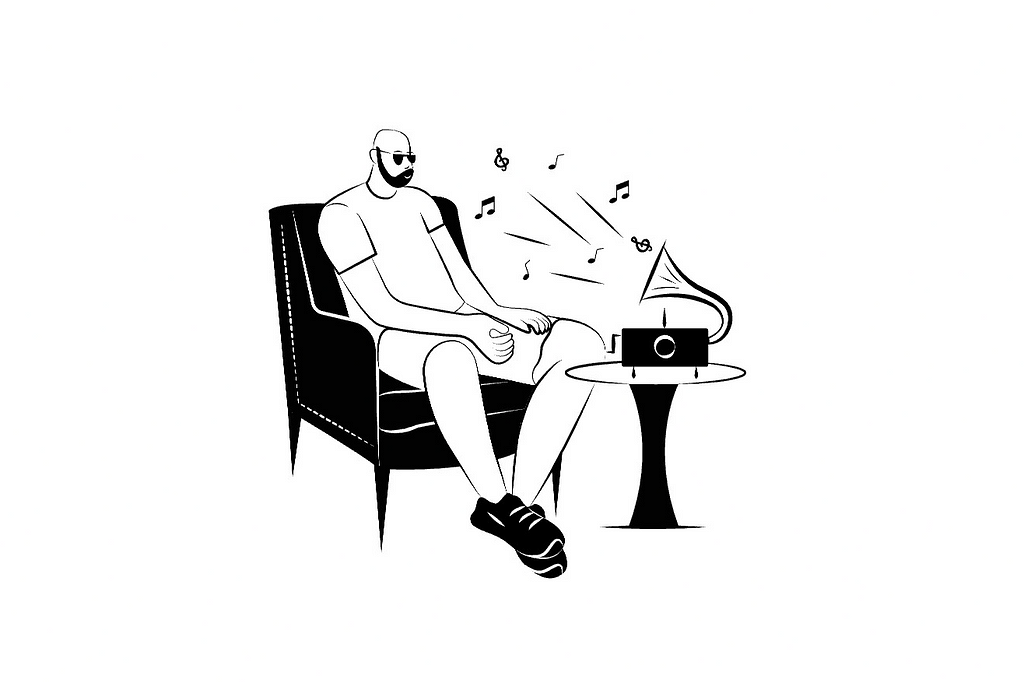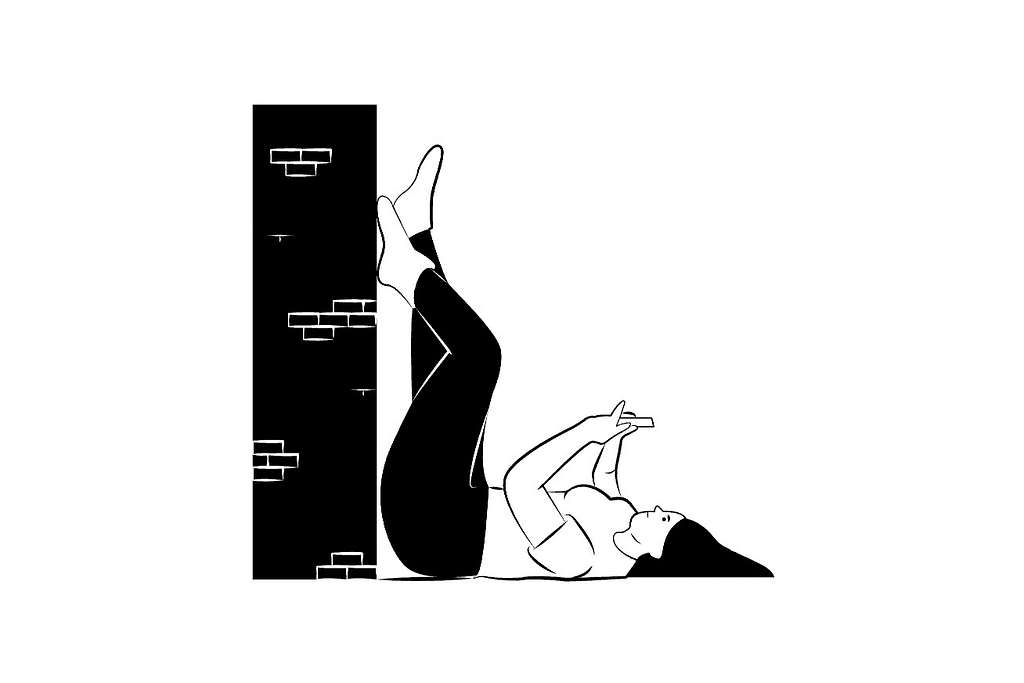Breaking UX Preconceived Notions

If you’re a UI/UX designer, Product Designer, or work as someone who has some influence in creating the user experience in your products, I think we all can agree on one thing. That’s what makes a good UX is quite subjective.
There are a lot of different aspects that could result in creating a good experience for one person but not as good for someone else.
It takes a lot of effort to communicate what makes a good user experience into data, logic, and convince how it could be profitable to businesses — especially when it can be fundamentally influenced by biases, perceptions, and preferences.
We can start seeing how things are starting to look the same. They’re becoming “standardized”, less novel, trying to look like how every other website and app out there.
We’re playing catch-up with those at the top: Google, Instagram, Facebook, Spotify, Airbnb, and Tinder just to name a few.
With how businesses work, it is pretty fair to say that they would generally prefer to copy what works instead of risking something new. They need reassurance, and copying those at the top fulfills it.
The problem
While understanding what makes a good UX is great, it’s easy for us to get caught up in our own biases and completely forget the other side of it.
We’re starting to glorify speed. We shouldn’t let users wait, make the journeys less of a task, lesser clicks on everything, and make sure that everything is easy to do.
Well, how about ride-hailing apps like Uber? They literally make people wait for using their product… yet, people still use them to this day.
How about giving fewer options to users so they won’t get overwhelmed by choice paralysis? Yet, they still give lots of options in e-commerce, places to travel, movies to watch, games to play, and more.
Do lesser clicks really equal to better user experience?
What’s the correlation between someone clicking a mouse button and the quality of their user experience?
Nothing. Absolutely nothing.
In fact, just in case — people have done tests to see if there’s any correlation whatsoever between these two things (clicking the mouse button and quality of user experience) — there isn’t.
We just say that less click means a better user experience because it is easy to talk about. It’s easy to rationalize and say fewer clicks are better.
Waiting is okay
Yes, waiting is okay.
People don’t care if things take longer.
Based on research done by Uber, it turns out that it has all to do with having a screen saying how long it’s gonna be until the car gets there, and a map in case you don’t trust the estimated time.
You can see exactly when the car is coming down your road and you can leave the house at the exact time — step straight into the car and feel like a God.
What an experience.

People will happily wait for five minutes if they know it’s going to be five minutes — or be pissed off for two minutes if they have no idea when it’s going to show up.
What people cannot stand is the experience/things that’s out of their control.
A taxi showing up as and when it feels like it, based on the traffic or whatever else isn’t nice.
The research also shows that apparently, people are okay with waiting longer in exchange for cheaper fares. This shows that when people are given control to choose, especially when the given option has something in return — waiting becomes okay.
Keep them informed
Being kept informed of exactly what’s going on, where it is, where the traffic is, how long away it is, and exactly when is it going to show up at our door is a great experience.
Now, imagine someone’s using your website, if they click a button — it needs to respond instantly, saying:
“yeah, I hear you. I know you clicked on me and I’m working on it.”
There needs to be instant feedback.
If the next page takes 30 seconds to load or the changes to this page take 30 seconds, that’s not as important. If you make them wait two seconds before anything changes on the screen after they click a button, that’s a travesty.
Perception matters

Nobody lives in the real world. Everybody lives in their perception of the real world.
Let’s say the user you’re interviewing is trying to book a flight and they say that it took them ages — like 15 minutes to book it.
The data shows it only took them 7 minutes.
But do you know what? It doesn’t matter because from their response — it tells you that it feels long to book the flight. They just indirectly say that they don’t like being on the website.
The truth is, time doesn’t really matter.
You wouldn’t complain if a rollercoaster was 15 minutes. You complain about being on an annoying website that takes 15 minutes.
There’s even evidence out there that suggests people enjoy booking their holiday more than they enjoy being on it.
“The experience of thinking about how good it’s going to be is actually more fun than the holiday sometimes.”
So interestingly, what you would want to do is elongate the experience of booking flights.
People’s experiences happen in their heads. They happen for all sorts of reasons but it would be a big mistake to assume that people’s experiences map onto reality.
The hard thing with being a designer — a digital designer, a UX designer as they’re sometimes being called is that you have to explain things that are kind of unexplainable to a large team of people.
People like talking about the number of times you click a mouse button because it’s really easy to measure and easy to measure designs against each other.
Our job isn’t just to measure and understand these experiences but to go back to an office of rational people and explain to them why this is more important.
The experience exists in user “experience” not only usability
Gear shifting
People like manual cars because they like the experience it offers.
They want to feel the gear shifts within their hands, how the engine sounds, and how the car moves within their controls.
People prefer certain things because they like the experience, not necessarily because it has better usability.
Hidden doors
Hidden doors, like one of those where you have to pull a book off a bookshelf, give you greater experience than normal doors.
You would even invite your friends more to the bar that has that kind of door just to show them the door.
People like it because it is a greater experience, not necessarily because it’s better usability.
Surfing
If you’re a human-centered designer back in the 90s and you see a surfer fell from his/her board, you would say that they’re having a hard time using the product.
So, let’s make the board bigger, let’s give it a motor, each at its sides so it doesn’t fall over.
How would people who surf feel about these “improvements” in usability?
Turns out that we just surf because it is a great experience.
Maybe it has something to do with the community — the feeling that you’re part of a tribe you have once you’re able to surf for the first time.
At the end of the day — the ocean always wins and falling out of your board is a part of the experience.
People like it because it’s hard and challenging.
That’s what makes it fun.
The verdict
The difference between human-centered design and UX is that UX is used to measure experience as well as usability.
Surfing is a great experience but the surfboard has terrible usability
Falling from the surfboard is fine — as long as they’re learning and still want to give it another go. Same thing with websites or applications.
If someone is using our website and they click on the wrong button, and they fully understand why it happened that way, where exactly they are, and where they want to go — they’ll probably feel okay about it.
If someone is navigating around our website and they make absolutely no mistakes at all but they’re still confused about how things work — they’ll feel much worse about it than if they made some mistakes.
One emotion that people seem to really enjoy is feeling in control, and actually, if you take away their clicks — they could be upset about that.
If someone clicks on something and the exact thing they thought would happen — happens, they would actually feel pretty good.
Thanks for reading this far! 😊
I think there are still lots of things that we can do with the state of UX designs currently. There are a lot of aspect of what makes something has a good user experience that is often overlooked while putting usability on the pedestal.
There’s still a lot more to be discovered in UX and we’re just at the beginning.
🗃️ References
- Testing the three-click rule
- The relationship between user mouse-based performance and subjective usability assessments
- How Uber uses psychology to perfect their customer experience
- Idleness aversion
- Goal gradient effect
- Uber experiments with letting customers wait longer for a cheaper fare
- Psychological study (2010): The connection between anticipation and happiness
- UX evaluation based on interaction-related mental models
- 10 Usability heuristics for user interface design — Nielsen Norman Group
Breaking UX preconceived notions was originally published in UX Collective on Medium, where people are continuing the conversation by highlighting and responding to this story.